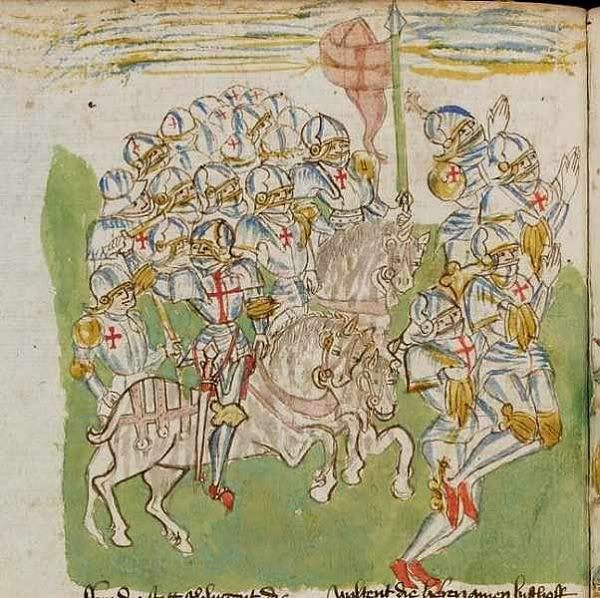
Thunderstorms Build on the Templar Horizon -
As the 13th century draws to a close, the Templar situation is grave. France was overcome with jealousy and hate against the Templars who would not finance Philip IV’s war against England. Christendom was driven out of the Middle East and the Kingdom of Jerusalem was defeated. The French would withdraw their support of the crusades to retake Jerusalem. Nonetheless, in Europe and the Middle East, the Templars remained wealthy and powerful. They owned vast tracts of land, castles, churches, farms, vineyards, a fleet of ships, and for a time the entire island of Cyprus.
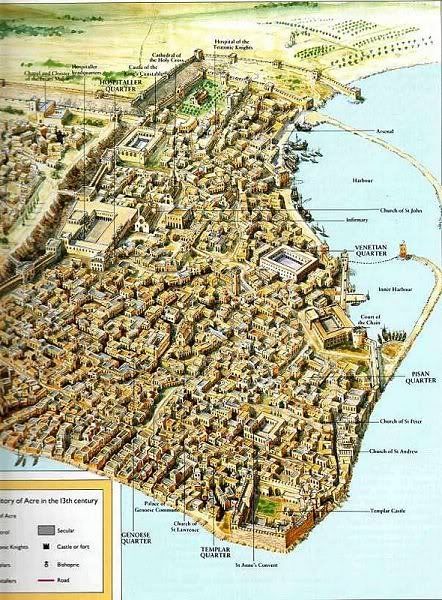
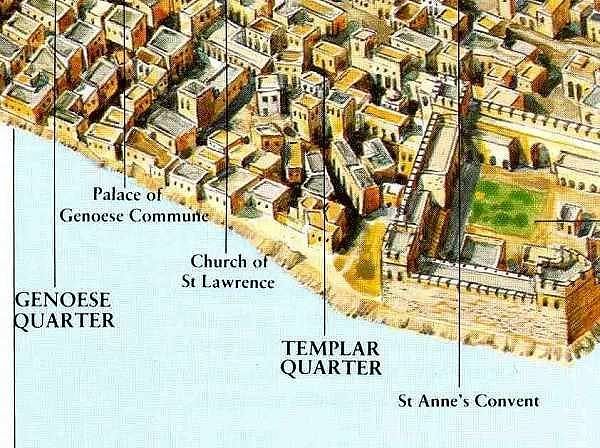
The fortress city of Acre fell on May 18, 1291 after a six week siege, although the Templars held out in their quarter for another ten days. The remaining crusader cities in the Levant fell by mid-August, 1291. The Templars relocated to Cyprus and attempted to continue their military adventures from this island base. They acquired fleets, and attacked Egypt and Syria, but failed to establish themselves on the Island of Ruad in the Tortosa which they held only briefly. Recruits were everywhere, and individual motivation remained religious salvation, but the Order was adrift. The world that demanded the ‘Ferocious Charge’ had disappeared, the Rule of the Templar Order as a military manual had become irrelevant.
---------
--------
Templar knights pray
Templar knights pray at the grave of St. George / Germany medieval ms
Robertus Monachus: History of the first Crusade,
St. Gallen, Stiftsbibliothek, Cod. Sang. 658, 1465.
Digital image - renzodionigi / flikr
Heresy trials, convictions and death by burning at the stake awaited the Templar leadership in France where the hatred of Philip IV prevailed over an indecisive Pope. In many countries, the Templars ‘melted away’, except in Portugal where they were long established and members of the royal family had joined the Order of Christ.
Thunderstorms Build on the Templar Horizon -
As the 13th century draws to a close, the Templar situation is grave. France was overcome with jealousy and hate against the Templars who would not finance Philip IV’s war against England. Christendom was driven out of the Middle East and the Kingdom of Jerusalem was defeated. The French would withdraw their support of the crusades to retake Jerusalem. Nonetheless, in Europe and the Middle East, the Templars remained wealthy and powerful. They owned vast tracts of land, castles, churches, farms, vineyards, a fleet of ships, and for a time the entire island of Cyprus.
Crusader fortress city of Acre / map
Crusader fortress city of Acre
Map - Marc Carrie (c) 2007
Templar quarter in crusader fortress city of Acre / map
Templar quarter in crusader fortress city of Acre
Map Marc Carrie (c) 2007
The fortress city of Acre fell on May 18, 1291 after a six week siege, although the Templars held out in their quarter for another ten days. The remaining crusader cities in the Levant fell by mid-August, 1291. The Templars relocated to Cyprus and attempted to continue their military adventures from this island base. They acquired fleets, and attacked Egypt and Syria, but failed to establish themselves on the Island of Ruad in the Tortosa which they held only briefly. Recruits were everywhere, and individual motivation remained religious salvation, but the Order was adrift. The world that demanded the ‘Ferocious Charge’ had disappeared, the Rule of the Templar Order as a military manual had become irrelevant.
If you can see this, then you might need a Flash Player upgrade or you need to install Flash Player if it's missing. Get Flash Player from Adobe.
In 1291, Templar Knights once again defended Acre, but this time were defeated and all Templar knights within the city walls died. The Holy Land was lost, 20,000 Templars had died in its defense.
Jacques de Molay, the last Grand Master, took office in 1292 and toured Europe to garner support for the Knights Templar. Pope Boniface VIII granted the Templars the same privileges on Cyprus that they had in the Holy Land. Edward I of England and Charles II of Naples were particularly sympathetic but Antioch – the last Templar fortress – fell to Islam in 1299.
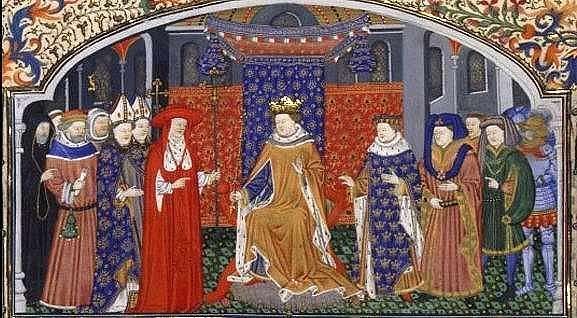
Philip IV of France plots the Templar Downfall -
Military defeats in the Holy Land aside, the Templars remained extremely powerful because of their pan-European banking system and the vast estates and tracts of land that they owned. Their terrible strategic mistake proved to be refusing a loan request from the French King Philip IV for his war with England. Philip quickly followed with a request to the Pope to excommunicate the Templars that Bonifice VIII refused. Philip then accused the Pope of heresy. Rescued by the people of Agni, the aged Boniface VIII died from shock due to the physical ‘rough and tumble’. His successor died eight months after becoming Pope and may have been poisoned by Philip’s agent. French and Italian cardinals appointed Bertrand de Both (Clement V), a childhood friend of Philip IV, as the next Pope, and he agreed to investigate the Templars.
---------
From Denmark to Spain, from Ireland to Cyprus, the Templars owned vast properties. They were the premier bankers and financiers to much of Europe.
-----------
There were other reasons for Philip IV to hate the Templars in addition to their refusal of his loan request. As the Teutonic Knights did when they founded Prussia, the Templars wanted to set up their own state in either Languedoc (southern France) or on Cyprus. Philip had inherited land in the Champagne region where the Templar headquarters were located. In 1306, they supported a coup on Cyprus that forced Henry II to abdicate in favor of his brother Amalric of Tyre. Struggling to create a unified French state, Philip IV plotted the downfall of the Knights Templar with a reluctant Pope.
On October 13 (Friday) 1306, Philip IV rounded up every Templar he could find in France and only a few escaped. This event is the origin of our superstition that Friday 13th is an ‘unlucky day’, perhaps a cursed day. While the terrible Inquisition had yet to be born, in the early 14th century the Vatican had a group of interrogators and clergy who were available throughout Europe to investigate charges of heresy. Drawing blood was not allowed, so suspects were tortured by any means that avoided leaving a visible wound.
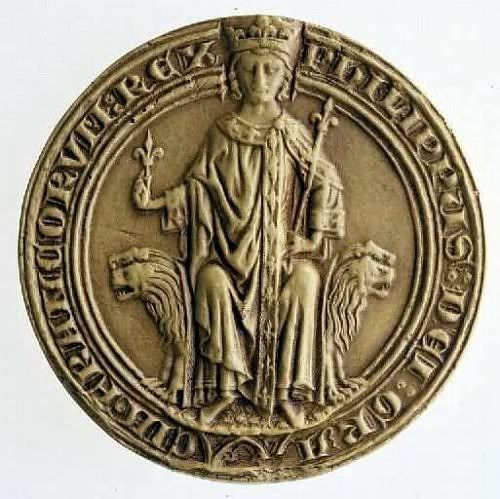
France / Philip IV – gold coin
Some Templars quickly admitted to the charges made against them, believing that to be the first step in a well known formality that led to rich ransoms being paid for prestige prisoners who were then set free. Sadly Philip IV had a relentlessness of his own and was ‘dead’ serious in his mission to destroy the Knights Templar. Tortured until they confessed to heresy, the French Templar leadership was then burnt at the stake.
The Templars did ask the Pope for help but all that he did was send letters to King Philip. The Templars’ great wealth, failure to secure the Holy Land against repeated Muslim attacks – an unrealistic expectation given the small number of fighting knights – and a very complex, almost congenial relationship with Islam in spite of their battle ferocity, may have threatened the Pope who at times was weak and insecure.
Some Templars quickly admitted to the charges made against them, believing that to be the first step in a well known formality that led to rich ransoms being paid for prestige prisoners who were then set free. Sadly Philip IV had a relentlessness of his own and was ‘dead’ serious in his mission to destroy the Knights Templar. Tortured until they confessed to heresy, the French Templar leadership was then burnt at the stake.
The Templars did ask the Pope for help but all that he did was send letters to King Philip. The Templars’ great wealth, failure to secure the Holy Land against repeated Muslim attacks – an unrealistic expectation given the small number of fighting knights – and a very complex, almost congenial relationship with Islam in spite of their battle ferocity, may have threatened the Pope who at times was weak and insecure.

Pope Clement V rides away from the Mother Church
The female figure in this manuscript illustration is a female saint who represents the Mother Church. The symbolism is unusual. Pope Clement V has turned his back on the Mother Church and is riding away from her. Was the artist a Templar, or Templar supporter, who believed that when Pope Clement V decided to support Philip IV, he had turned his back on the true Mother Church whom the Templars had supported with unswerving devotion and battlefield ferocity?
Phillip IV relentlessly built up the case against the Templars, who were unable to adequately defend themselves.
Public opinion in Paris was decidedly against the Templars. In response, and abetted by bullying from King Philip, Pope Clement V issued a bull that ordered all Christian monarchs in Europe to arrest all Templars and seize their assets. Most kings did not believe the charges but the opportunity to take Templar wealth was a prize impossible to ignore. Proceedings were begun in England, Iberia, Germany, Italy and Cyprus. Likely not believing the charges he lodged at the 1308 Tours Assembly, the opportunity for Philip to free France from the debt owed the Templars had immediate benefits and was too great to ignore. France was going broke and Philip’s hold on the throne was weakening.
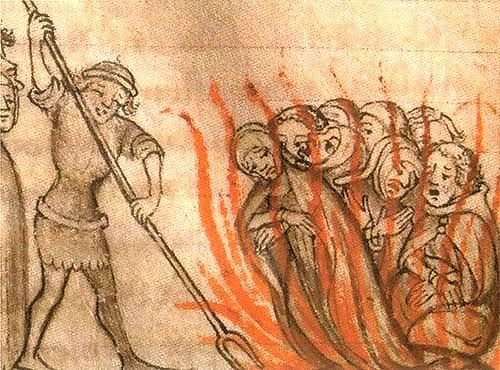
Templars burned at the stake /
Chronik, “Von der Schöpfung der Welt bis” 1384 – “Creation of the World until 1384
Philip IV reacted ferociously by creating a situation wherein Pope Clement V would be forced to take a final decision during the Council of Vienna in 1312. Subdued by the French King, the Pope issued a bull on March 22, 1312 that abolished the Knights Templar although he did state that this action was not the condemnation of heresy. He then ordered a general arrest throughout Europe to ‘find the truth’. Did the Pope ‘sell out’ the Templars knowing full well they were innocent of heresy and the other charges lodged against them? It appears that Pope Clement V could not stand up to the cold, hateful mania that Philip IV unleashed upon the Knights Templar.

Templar execution – burned at the stake / medieval ms
The trial period of the Templars took 5 years with protests occurring throughout Europe. More than 5,000 arrests were made in France. Thirty-eight, mostly elderly Templars were tortured, 105 ‘confessed’ and 69 leaders were burnt at the stake. Ordinary soldiers who confessed were given prison terms, then allowed to join other Orders. Beyond France, Templars were arrested in England, Sicily, and Cyprus. Outside France, the Templars were often treated with kindness and leniency. In spite of the arrests in Aragon and Castille, the strongest Templar support was in Iberia.
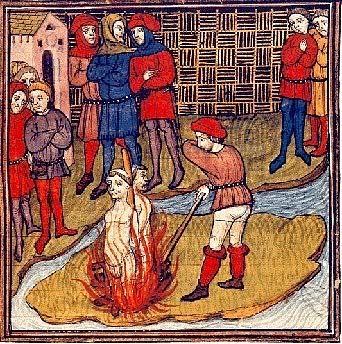
Jacques de Molay and Geoffrey de Charney burned at the stake, March 18, 1314 / Chronicle of France or St. Denis – 14th century
In France in 1314, Jacques de Molay, the last Grand Master of the Templars, was convicted as a relapsed heretic. He cursed the king and Pope and challenged them to appear before God before the year’s end. Geoffrey de Charney and the Grand Master were roasted horrifically and slowly over a fire on the evening of March 18, 1314, on the Isle des Juifs. Within 7 months, Philip IV had fallen from a horse and died. The Pope himself lived only one month after the execution. The legend of Templar magical powers was noticeably strengthened.

Seal of Philip IV / 13th century
Scandal had enveloped the Templars and seriously damaged their reputation and integrity. The Vatican feared that further delay would give the Templars opportunity to ’squander’ the great wealth lavished upon them by the Church. Aside from belief in and continued support of the Templars and their cause, the kings of Europe awaited the seizure of the Templar assets with mixed emotions. Templar lands and accounts were seized, but many were very skeptical, convinced there was only a mercenary motive for the persecution. Philip IV only informed the Pope very late in the plot. Perhaps the bottom line was that the French crown was in a financial crisis, owed money to the Templars and it was Philip’s duty to purify his realm. Then again…?
Phillip IV, King of France, was successful. Trials were held, mostly in France, and the last two Grand Masters were burned alive in 1314. The Knights Templar appeared to be destroyed, but did they survive elsewhere?
Question 1 / Philip IV -
There are questions – mysteries yet to be solved – about this period of severe persecution against the Knights Templar, particularly in France. There are noticeable contradictions in the actions of Philip IV although most history focuses on his demonstrated ‘hatred’ for the Templars. Ironically, he had signed an alliance against the Pope with the Templars in 1303. And the day before that fateful Friday 13th, Philip has asked Grand Master Jacques de Molay to be a pall-bearer at the funeral of the King’s sister. Why did the King of France then turn against the Knights Templar with extreme anger and violence? Or were these actions of Philip only subtle maneuvering intended to keep the Knights Templar off guard? Was the Templar persecution by Philip IV really just about a debt owed by the throne and cold hearted banking, or was there something else the French king felt must be destroyed ?
Question 2 / The Chinon Parchment -

France – Chinon Castle / Moulin Tower – Keep
Ironically, Pope Clement V absolved the Knights Templar in 1308 by official decree as attested to in the rediscovered Chinon Parchment. The Chinon Parchment remained hidden in the Vatican Secret Archives until rediscovered by scholar Barbara Frale in 2002 – see Source #3. Note that ‘secret’ applied to these archives does not have the usual meaning. ‘Secret archives’ at the Vatican only indicates that this library is that of the Pope and not a department of the Roman Curia.
The Act of Chinon parchment records the absolution given to Jacques de Molay and other heads of the Knights Templar after they had repented and asked to be forgiven by the Church. The leading members of the Order were reinstated in Catholic Communion and re-admitted to receive the sacraments. The Act of Chinon represents Pope Clement V’s belief that he could guarantee the survival of the Knights Templar, although he had planned a radical reform that would include merger into one body with the Knights Hospitaller.
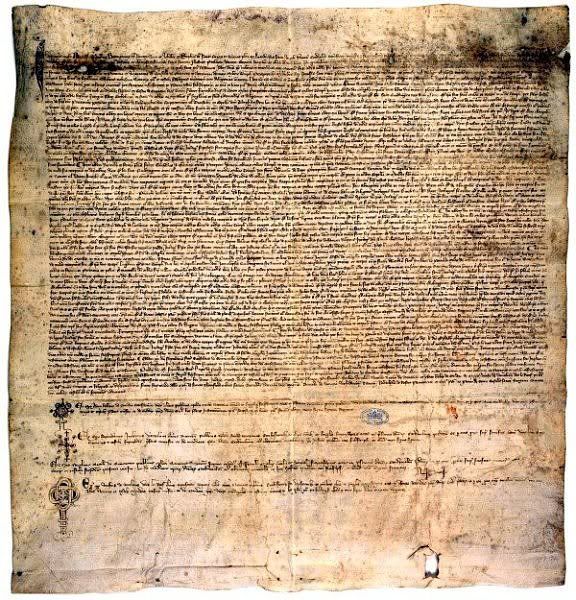
Act of Chinon, 1308 / Vatican Secret Archives
Vatican parchment

Pope Clement V – audience
Ironically, Pope Clement V had absolved the Order in 1308 by official decree as attested to in the rediscovered Chinon Parchment. The Chinon parchment was not circulated, and we have to assume that this decree was unknown to European kings at this time. The Templar persecution went forward and we are left with a large question. Why did Pope Clement V absolve the Order of heresy in an official decree, then ensure that decree would be hidden away for several centuries?
Heresy and Secret Knowledge – Question 3 / What was Baphomet?
Charges of Heresy included the usual list: worshiping an idol; spitting, trampling, or urinating on the cross; while naked, being kissed obscenely by the receptor on the lips, navel and base of the spine; eating ashes of the dead; and impregnating virgins. This is ‘same-old, same-old’, the Vatican’s shopping list of charges that were always lodged against ‘heretics’. However in the Templar case, there is an interesting addition to the list of heresies.
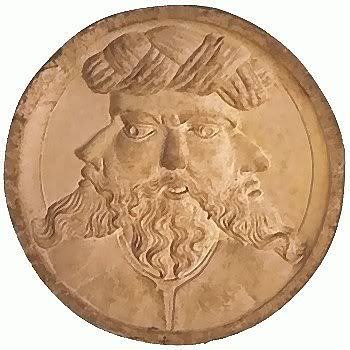
Baphomet / stone sculpture, Convento de Cristo, Tomar Portugal – 16th century
Relief sculpture
One charge stands out for its uniqueness and interest – worship of a ‘magical’ head – although there is no ‘hard evidence that the Templars did so. Sometimes called ‘Baphomet’, some believed the image was a Muslim idol, possibly representing Muhammed. This head has numerous descriptions and it is not possible to decide what it looked like. Take your pick: a mystical head with three faces, head with four feet, a face with no feet and/or horns, or skull encrusted with jewels. Any of these could be the revered relic of a former grand master, John the Baptist, Euphemia, one of Ursula’s eleven maidens or Hugues de Payens.
To Be Continued -
If the Templars had found the Dead Sea Scrolls, as some believe, and had learned secretive rituals and esoteric knowledge possessed only by the Essenes, and/or some had converted to Sufi Islam, then we have an inner circle of Templars who were very knowledgeable about transcendental mystical truths. That is knowledge that engenders fear, if a sense of it leaks into the world-at-large which forever persecutes transcendental, tolerant, knowledgeable religiosity.
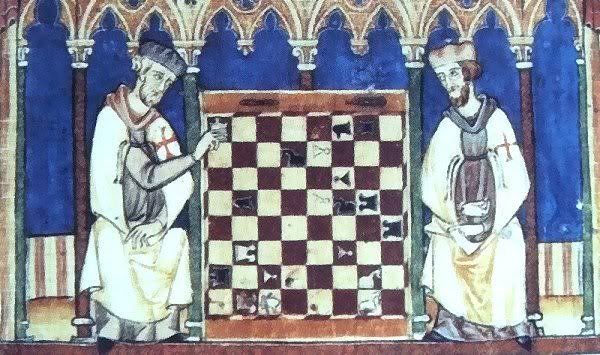
Templars Playing Chess / “Livre des Echecs” by Alphonse le Sage (Alfonso X), 1283
Medieval ms painting
Many Templars did survive accusations of heresy and persecution by Philip IV. A tiny minority of the Knights Templar were burned at the stake. Unfortunately, this small figure included the Order’s leadership in France. Overall, there is no controversy about Templar survival. Outside France, trials were much less frequent and often led to a verdict of ‘not guilty’ or sentence with mild conditions such as a demand to enroll in another military order.
Also outside the borders of France, the Pope transferred a great deal of Templar property to the Knights Hospitaller, who accepted many Templar knights into their membership. The Kingdom of Aragon had been an early supporter of the Knights Templar and, together with the Order of Montesa, acquired Templar assets. In Portugal, the Knights Templar had established themselves in 1128 and long enjoyed the support and friendship of the royal family. They would continue for a long time in Portugal, where the name of the Order was changed to the Order of Christ. In the two centuries to follow, the Order of Christ in Portugal had an extraordinary influence upon Portugal and the world.
A longer and more detailed version of this article is online at ahrtp.com. The first article in this series at EG looks at Templar origins, the Ferocious Charge, and their fighting in Near East on behalf of the crusades. The next article will look at Templar survival and transformation in Portugal and Spain. Members of the royal family joined the Order of Christ in Portugal as did Prince Henry the Navigator, and Vasco da Gama. Portugal and the Order of Christ catalyzed the Age of Discovery for Europe and thereby changed the world forever.
Get Templar Knight stuffs.
--------------
-------------
-------------
RELATED POSTS:-
- Heretics and Holy Warriors: The Persecution of the Knights Templar
- Russian secret super flying fortress during to the world world 2.
- History origin of daily sayings.Your be amaze by the origin of words like save by the bell,wake,upper crust,thresh hold,rain cats and dogs,and others.
- Real African Kings.Read about their empire and photos of their throne and ceremony grubs.











